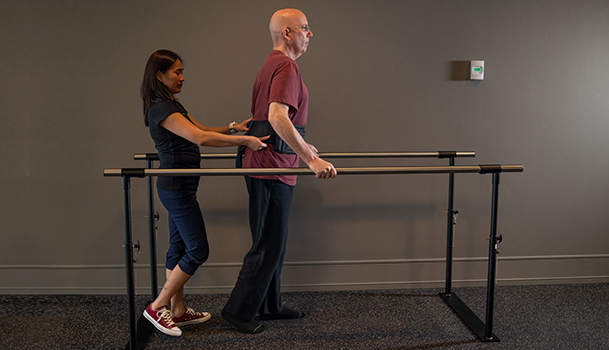A spinal cord injury can change someone’s life in seconds. Whether it’s caused by a car crash, a fall, or a medical condition, the impact on mobility and independence is often significant. What begins as a medical emergency quickly turns into a long-term challenge that affects every part of daily life. Recovery takes time, planning, and consistent support. Understanding how these injuries work and how proper care and services make a difference can help individuals and families take the proper steps forward.
What Is a Spinal Cord Injury?
A spinal cord injury is damage to the spinal cord, the bundle of nerves running down your back that sends messages between your brain and body. This injury can happen from accidents, falls, or sports injuries. It may affect movement, feeling, and control of body functions below the injury site. Some people may lose the ability to walk or move parts of their body. Treatment and therapy can help manage symptoms and improve quality of life over time.
Common Causes and Risk Factors
Car accidents, falls, sports injuries, and violence are the leading causes. Some people also suffer spinal damage due to infections, tumours, or conditions such as arthritis. Age can increase the risk, and men are statistically more likely to be affected.
Effects on Daily Life
Living with a spinal cord injury means adapting to many changes. The level of injury often determines the extent of movement or independence a person has. For example, injuries in the neck area can affect breathing and arm movement. Injuries lower down may affect the legs and bladder control, but not the arms. Pain, loss of movement, muscle weakness, and problems with bowel or bladder function are common symptoms. These changes can affect someone’s ability to work, socialise, and care for themselves. This is why having a structured spinal cord injury program becomes essential for recovery and long-term well-being.
The Role of a Spinal Cord Injury Program
A spinal cord injury program plays a key role in helping people recover and adjust after a spinal cord injury. These programs provide medical care, physical therapy, counselling, and support to improve mobility, independence, and mental well-being. They are designed to meet each person’s needs, focusing on both physical recovery and emotional healing. A good spinal cord injury program also offers education and training for daily activities, helping patients rebuild their lives and return to work, school, or home life confidently.
How a Registered NDIS Provider Can Help
A registered NDIS provider delivers services funded under a participant’s NDIS plan. While they don’t control funding, they provide essential support services, including personal care, therapy, assistive technology, and community access. For individuals with spinal cord injuries, this might include mobility support or daily assistance. These providers adhere to strict safety and quality standards, providing families with peace of mind. They also help participants align services with their personal goals, whether that means building independence, enhancing daily life, or participating in community activities. Choosing a registered provider ensures care is reliable, safe, and tailored.
Rehabilitation and Recovery
Recovery from a spinal injury does not always mean complete physical healing. Instead, it focuses on improving function, mental health, and quality of life. A spinal cord injury program helps a person reach these milestones through exercises, mental health support, and skill-building.
Early intervention matters. The sooner therapy starts, the better the chances for improvement. Even small gains in movement or strength can make a big difference. The role of families, carers, and support staff becomes central in this process.
Choosing the Right Support
Knowing how to choose help is as important as the help itself. Working with a trusted registered NDIS provider ensures access to professionals who understand spinal injuries. They coordinate care, monitor progress, and adjust services as needed. It is about more than just tasks. It’s about building confidence and establishing a routine again. Some providers also offer social support programs, where individuals can meet others who are going through similar challenges. This peer connection plays a significant role in building motivation and reducing isolation.
Conclusion
Spinal cord injuries can reshape someone’s life. But with the right tools, people can rebuild their path forward. A combination of the right spinal cord injury program and a reliable registered NDIS provider helps make recovery manageable, structured, and supportive. The journey after injury is not easy. But consistent care and personal attention go a long way in helping someone regain control of their life. Everyone’s needs are different. Recognising that difference is the first step towards better outcomes.
